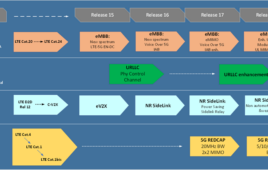A key congressional intelligence committee has opened an investigation into national security threats posed by Chinese-owned telecommunications companies working in the United States, specifically Huawei and ZTE.
Michigan Republican Mike Rogers, chairman of the House Permanent Select Committee on Intelligence, ordered the probe after findings from a preliminary review warranted a full investigation. Ranking Democrat committee member Dutch Ruppersberger of Maryland is also backing the inquiry.
“(We) have been adamant that the committee remain focused on the threat posed to our nation’s security and critical infrastructure by the expansion of Chinese-owned telecommunications companies – including Huawei and ZTE — into our telecommunications infrastructure,” the lawmakers said in a statement. “After a series of meetings, briefings, and studies with the intelligence community and the private sector, this preliminary review suggests that the threat to the supply chain constitutes a rising national security concern of the highest priority.”
The fact-finding mission will examine whether Huawei and ZTE provide the Chinese government an “opportunity for greater foreign espionage, threaten our critical infrastructure and further the opportunity for Chinese economic espionage.” The committee will also look into whether the U.S. intelligence community is “appropriately focused on discovering the full scope of the Chinese threat.”
“As the formal investigation begins, I stand by my caution to the American business community about engaging Huawei technology until we can fully determine their motives,” he said, warning that “there are other companies that will be included” in the investigation.
Huawei has repeatedly denied its alleged ties to the Chinese government and says its equipment poses no unique security threat. In an open letter last February, the company asked the government to open an investigation to clear its name.
Bill Plummer, Huawei’s vice president of external affairs, echoed the company’s prior defense in response to the new federal investigation.
“Network security concerns are not about Huawei. The integrity of our solutions has been proven worldwide, having been deployed by 45 of the world’s top 50 operators across the globe without security incident,” Plummer said in a statement. “Huawei acknowledges that network security concerns are very real and we welcome an open and fair investigation.”
ZTE also defended itself.
“ZTE is wholly committed to transparency and will cooperate in addressing any questions regarding our business,” the company said in a statement. “We are confident a fair review will further demonstrate that ZTE is a trustworthy and law-abiding partner for all U.S. carriers and their customers.”
Government concerns about ties to the Chinese government lost Huawei and ZTE a chance to bid on Sprint Nextel’s network modernization project, which was ultimately awarded to Samsung, Ericsson and Alcatel-Lucent.
Huawei was also forced to abandon its acquisition of 3Leaf Systems, barred from its attempted purchase of 3Com and made to give up a planned bid on Motorola’s networks business, which was eventually acquired by Nokia Siemens Networks.
Huawei has recently had some success breaking into the U.S. smartphone market with the launch of its first AT&T smartphone in September, the Impulse 4G.




